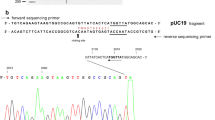Abstract.
Type II restriction endonucleases are components of restriction modification systems that protect bacteria and archaea against invading foreign DNA. Most are homodimeric or tetrameric enzymes that cleave DNA at defined sites of 4–8 bp in length and require Mg2+ ions for catalysis. They differ in the details of the recognition process and the mode of cleavage, indicators that these enzymes are more diverse than originally thought. Still, most of them have a similar structural core and seem to share a common mechanism of DNA cleavage, suggesting that they evolved from a common ancestor. Only a few restriction endonucleases discovered thus far do not belong to the PD...D/ExK family of enzymes, but rather have active sites typical of other endonuclease families. The present review deals with new developments in the field of Type II restriction endonucleases. One of the more interesting aspects is the increasing awareness of the diversity of Type II restriction enzymes. Nevertheless, structural studies summarized herein deal with the more common subtypes. A major emphasis of this review will be on target site location and the mechanism of catalysis, two problems currently being addressed in the literature.
Similar content being viewed by others
Author information
Authors and Affiliations
Corresponding author
Additional information
Received 15 November 2004; accepted 9 December 2004
Rights and permissions
About this article
Cite this article
Pingoud, A., Fuxreiter, M., Pingoud, V. et al. Type II restriction endonucleases: structure and mechanism. CMLS, Cell. Mol. Life Sci. 62, 685 (2005). https://doi.org/10.1007/s00018-004-4513-1
DOI: https://doi.org/10.1007/s00018-004-4513-1




